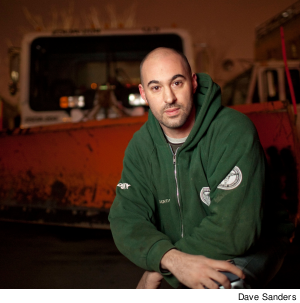 |
The December 26 blizzard had been raging for hours when NYC sanitation worker Gian Carlo Acquasanta received a call ordering him to come in for snow removal work.
It was a storm that dumped nearly two feet of snow on New York amid howling winds, leaving many neighborhoods paralyzed. The Bloomberg administration had failed to declare a snow emergency, giving the storm a head start.
Many sanitation workers like Acquasanta had been on vacation or had the day off, and now they struggled to make it to work. Acquasanta first had to dig his own car out of the snow, then dig out his parents’ nearby home in Forest Hills. “Before anything, I have to take care of them,” he told Clarion.
HIDDEN DANGERS
Then what would normally be a five-minute commute to the Queens West Sixth Sanitation Station in Maspeth took an hour and 15 minutes.
Driving didn’t get much easier once Acquasanta, an 11-year veteran of the Sanitation Department, was back on the streets driving a garbage truck with a plow mounted on front. The snow fell faster than it could be cleared and the wind blew piles of white powder that had already been moved back onto the roads.
In Forest Hills and Rego Park, where Acquasanta was working, abandoned cars rendered many streets impassable, a problem compounded by the storm’s head start. “There were a lot of blocks you couldn’t even go down,” he said. “I’d say 80% of the route was blocked.”
Lack of visibility often made it impossible to see what might be around the next turn. A blocked residential street meant having to throw his vehicle into reverse.
“You’ve got ice forming on your windows, you can’t see anything, you have no rearview mirror, you have no guide man working with you, you’re just working with side mirrors,” Acquasanta said. “It’s risky business to back up your truck.”
He estimated 12 to 15 out of roughly 40 snow removal trucks became stuck in the snow in his area, as did a tow truck sent out to rescue them.
Snowplows generally work in tandem, one positioned behind and to the right of the other, moving snow from left to right with a salt spreader following from behind. Acquasanta says he drives 60 to 100 miles per night during a typical 12-hour shift.
STAYING AT WORK
Instead of returning to the station as he usually would, Acquasanta took his breaks on the side of the road during the storm and its aftermath. That night, like many of the 75 or so workers at his station, he chose to crash there rather than make the trek home.
“When it’s really bad, a lot of the guys, myself included, we’ll sleep at the garage,” said Acquasanta. “We’ll just stay there for a few days because it’s not even worth going home. Our own parking lot was bombed. After doing 14 hours [on the job], the last thing you want to do is shovel out your car.”
Acquasanta worked mostly 12-hour shifts every day for six weeks straight except for a single day off. The December 26 blizzard was followed by the snowiest January in New York City history, and Acquasanta’s coworkers kept the same brutal schedule he did. When the streets were cleared of snow, the sanitation workers switched to catching up on garbage collection.
But while sanitation workers were putting in long, exhausting hours, they were reading newspaper articles that painted them as lazy, selfish and irresponsible. A wave of anti-worker media coverage began December 30 with a front-page headline in the New York Post: “ABOMINABLE SNOWMEN: Sanit workers in blizzard sabotage.” The article insinuated that the city’s many uncleared streets were the handiwork of disgruntled sanitation workers, supposedly retaliating against layoffs and demotions within their department by doing as little as possible. But multiple investigations have found no evidence to support the charge (see below).
No one where he worked was slowing down, said Aquasanta: “If anything, it should’ve been called ‘the speed-up,’ because these guys don’t want to be away from their families.” Acquasanta thinks the “snowfu” started at the top, not the bottom, of the chain of command.
KNEW IT WAS COMING
“It was just mismanagement, it was underestimating the storm,” he said. “They knew a storm was coming but didn’t think it was such a big thing.”
Some media coverage, including much of the reporting in the Daily News, was more accurate. And Acquasanta, 33, says he likes his job doing work that everyone in the city depends on. “I enjoy interacting with people, I enjoy being outside,” he told Clarion. “The last thing I want to do is be in an office where I count down hours. With this job the time goes by, especially in the snowstorms.”
But some interactions are more enjoyable than others. Shortly before midnight on New Year’s Eve, an SUV pulled up next to Acquasanta’s truck. Instead of a New Year’s greeting, one of the passengers leaned out the window to curse him. “The guy spits at the spreader and he goes, ‘You fucking garbage men, you’re not worth a shit,’ and he peels off.”
The incident left Acquasanta shaking his head: “It’s just messed up. My parents live in the district that I work. So every street, I treat it as if my parents need to go down that street.” It’s not an unusual attitude, he says. “A lot of these guys don’t need their parents to live somewhere where they work, they just take pride in their district and the neighborhood that they represent. We take a lot of pride in the fact that what we do, we do well.”
More Coverage: What Really Caused NYC’s Epic ‘Snowfu’

